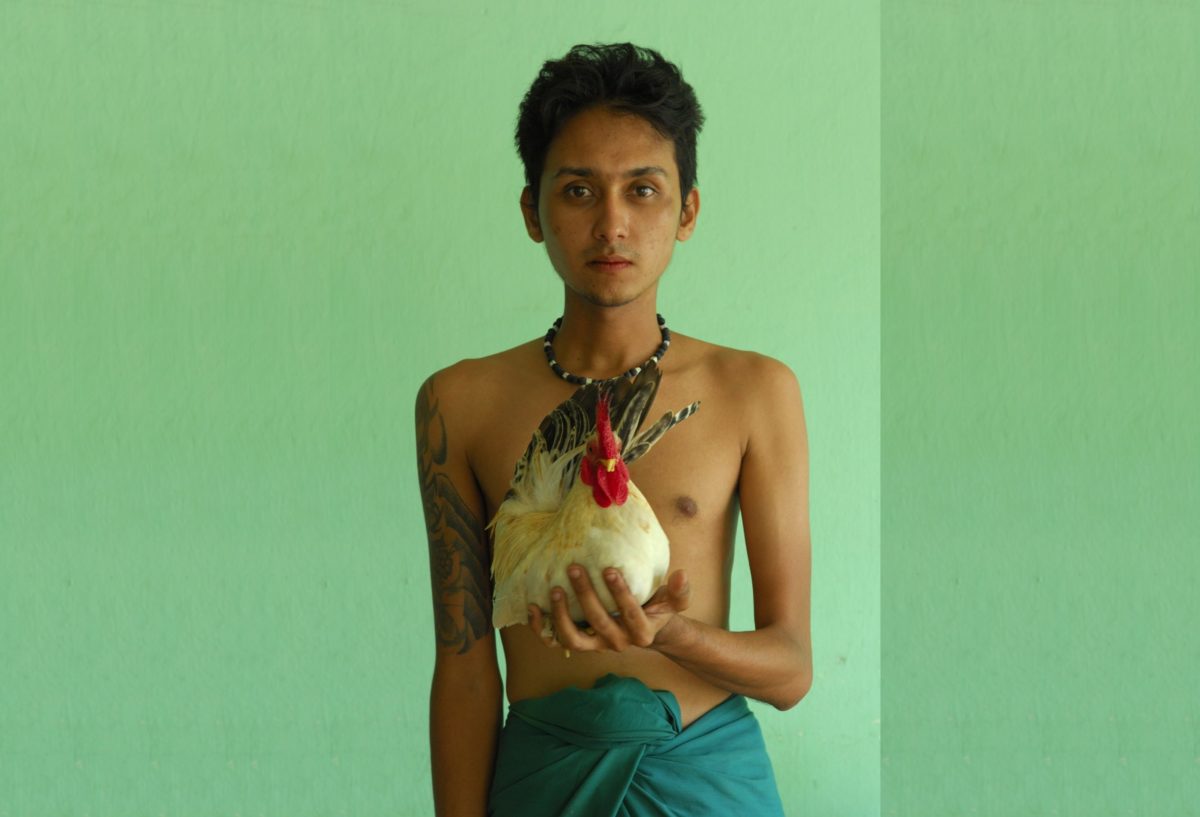I’m sitting on the bank of the Chao Phraya, digging into a slimy plastic bag of fall-off-the-chopped-bone grilled chicken with sticky rice, which I bought at a little street stall just upriver from Bangkok. It’s a one-person feast. I devour the meat, one bite at a time, as I roll the rice into little balls between my fingers, dipping it into super-spicy nam prik. I sop up the sauce and revel in the sweet-tangy heat of the whole affair (undoubtedly enhanced by MSG). My mouth tingles, my fingers glisten with grease. I sweat in my seat on this riverside pier, the air 90 degrees on the Fahrenheit scale, the chile many multitudes higher on the Scoville scale. All around me, people dig into little plastic bags of their own. I briefly wonder how many others are having unique little chicken epiphanies this same afternoon.
I’m sitting on the bank of the Chao Phraya, digging into a slimy plastic bag of fall-off-the-chopped-bone grilled chicken with sticky rice, which I bought at a little street stall just upriver from Bangkok. It’s a one-person feast. I devour the meat, one bite at a time, as I roll the rice into little balls between my fingers, dipping it into super-spicy nam prik. I sop up the sauce and revel in the sweet-tangy heat of the whole affair (undoubtedly enhanced by MSG). My mouth tingles, my fingers glisten with grease. I sweat in my seat on this riverside pier, the air 90 degrees on the Fahrenheit scale, the chile
As a species, we humans love chicken. As a meat, it surpasses all others in the number of animals raised for consumption. It’s the most plentiful bird in the world, and we’ve made it so: more than 19 billion worldwide, which equates to an average of nearly three chickens per person on Earth (or nearly 40 for every person in Bahrain and Brunei, the biggest chicken lovers on the planet). Those numbers are rising, with poultry as the world’s leading livestock industry.
Why such ardor for a bird? Well, it tastes like chicken. But it’s also cheap — chickens are quicker and easier to raise than cattle, pigs or goats. And unlike other creatures of the human dining repertoire, few cultures maintain chicken taboos.
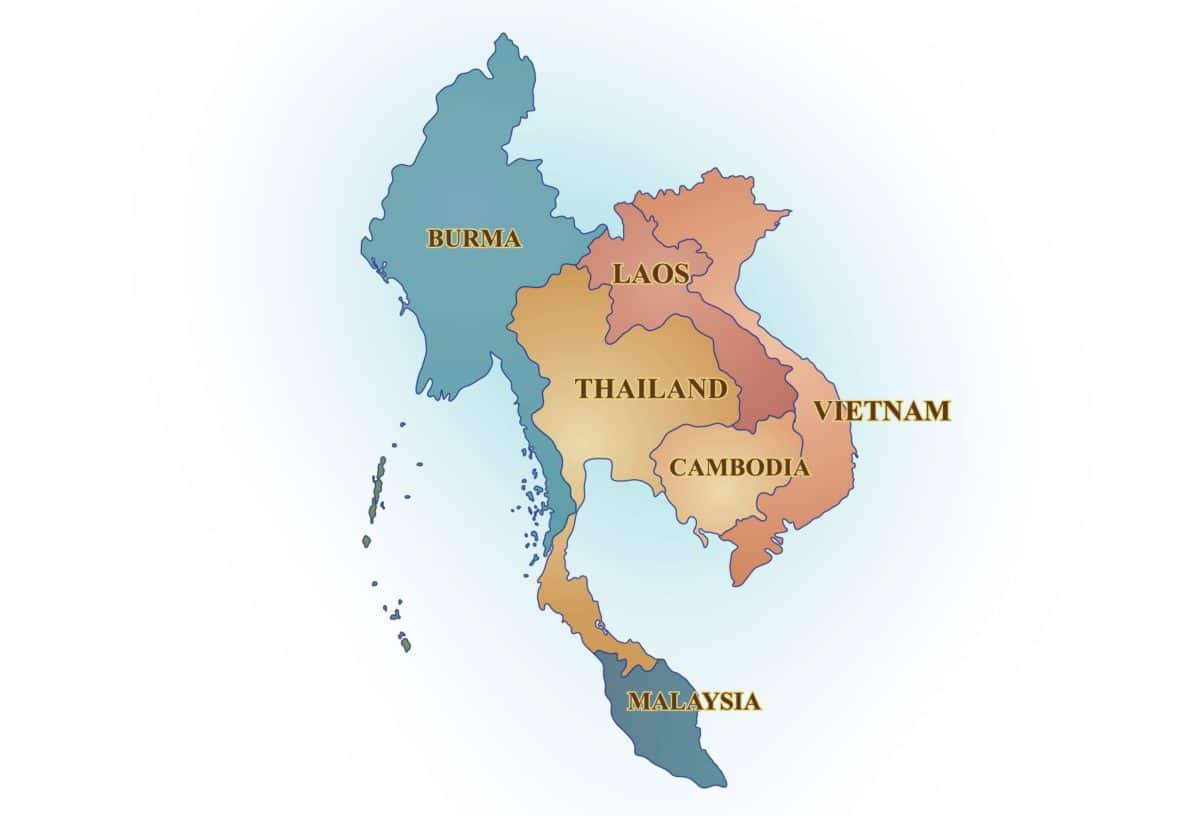
But our chicken addiction has led human beings into a thicket of trouble. The more we eat, the more we produce, the more we wrestle with our conscience about what we do to animals in order to consume them — practices that may threaten our very survival as human beings. The human-chicken story is one of love, evolution and risk.
The typical chicken we eat is a descendent of the “aggressive, pugnacious” red jungle fowl of Asia, writes Harold McGee, the godfather of food science. It was Gallus gallus, a member of the pheasant family, which eventually morphed into the breast on our plates today. “Chickens seem to have been domesticated in the vicinity of Thailand before 7500 BCE, and arrived in the Mediterranean around 500 BCE,” he writes. Fitting, then, that Thailand today serves such finger-licking luscious little bits of bird. In the West, it wasn’t until the 19th century when imported Chinese fowl sparked a frenzy of bird breeding, turning the “unpampered farmyard scavengers” of the day into the meat we Americans now love. We humans have tamed the wild and pugnacious into a feathered food machine.

I have seen Gallus gallus in the wilds of Asia. It’s a mighty impressive bird, especially the cock, with radiant orange plumage like a coat of lava—unlike anything I ever saw growing up in the 70s and 80s in the American Midwest. We didn’t live on a farm. We lived in the suburbs. Our already-plucked chickens came on yellow Styrofoam trays, wrapped in plastic and arranged in parts. Usually breasts. Usually more breasts on a tray than on an individual chicken. I never thought about that as a child, and I never fully thought much about the math until years later, living in Asia, where the chicken in our local market was a bird, the whole bird and nothing but the bird. With two breasts. And then one day, one vendor started selling separated breasts, legs and wings. It was the absence of the rest of the bird that really got me thinking.
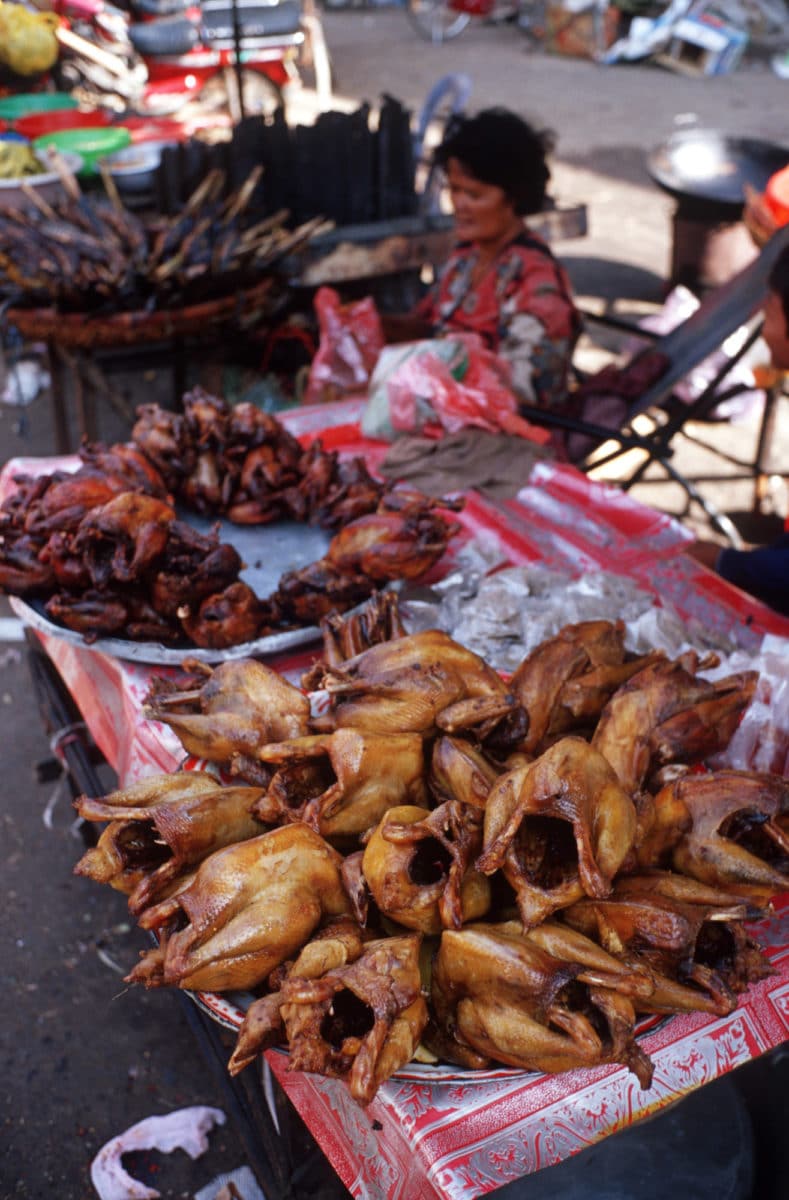


I have seen Gallus gallus in the wilds of Asia. It’s a mighty impressive bird, especially the cock, with radiant orange plumage like a coat of lava — unlike anything I ever saw growing up in the 70s and 80s in the American Midwest. We didn’t live on a farm. We lived in the suburbs. Our already-plucked chickens came on yellow Styrofoam trays, wrapped in plastic and arranged in parts. Usually breasts. Usually more breasts on a tray than on an individual chicken. I never thought about that as a child, and I never fully thought much about the math until years later, living in Asia, where the chicken in our local market was a bird, the whole bird and nothing but the bird. With two breasts. And then one day, one vendor started selling separated breasts, legs and wings. It was the absence of the rest of the bird that really got me thinking.
In Europe, “Breast fillets are so profitable that they finance all the other parts of the bird,” according to a Heinrich Boll report called Meat Atlas. “For the producer, if it is not breast, it is waste.” In years past, all those wings and legs were ground into feed. But that ended with the emergence of mad cow disease, and the subsequent EU ban on feeding animals bits and pieces of their cousins. So, instead, European producers sent their poultry bits and pieces to Africa at such low prices that the imports undermined the local chicken industry — and Africans developed a palate for wings and legs.
Frozen bird bits have made forays into other parts of the developing world, too — such as deep in the heart of Borneo. I’m squashed in the back of a beat up old Toyota double-cab with ripped interior and, on the outside, a rusty hunk of metal where the bumper should be. The tires are slathered in mud as Francis, the driver, shimmies down a slick logging road in an oppressive rain. We’re in the Kelabit Highlands where undulating mountains form the border between Malaysia and Indonesia. For thousands of years, small local tribes have occupied the old-growth jungles that straddle these two nations. But the forests are falling, and the village is changing as traditional diets make way for the modern. “People here love chicken wings!” Francis says with a grin. So he buys them frozen from a warehouse in town on the coast, he trucks them 15 hours into the jungle. Afterward he returns to the coast with a cooler full of bush meat, for his family, completing the circle.
But still, many Asians harbor a deep admiration for the bird that sustained their youth. “Local chicken.” “Village chicken.” These terms are used with the same reverence we Westerners accord “free-range” and “organic” (whatever that actually means anymore).

The Prem Center Cooking School is one of the few cooking schools that takes a holistic approach to Thai food. They raise produce and livestock on the adjoining organic farm and teach traditional foods appropriate to the season and the student’s health needs. Photo credit: Jerry Redfern
I’m in mountainous farm country in the far north of Laos when, one day, I start describing the typical American chicken operation to local farmers. “It’s not possible to do that,” a man named Davong tells me. He sees no future in Laos for an American-style broiler operation, which can easily house 100,000 birds at a time. Why wouldn’t it work? “If you have a chicken coop,” he says, “you have to look for food for the chickens.” And, he points out, that’s just not economical. By his estimation, it’s far easier and cheaper to let chickens eat what they peck on the ground.
Farther down the dirt road I ask a woman named Lee similar questions about chicken, and she agrees with Davong. “That’s for economy only,” she says after I describe typical conditions for industrial chickens of the West.


The Prem Center Cooking School is one of the few cooking schools that takes a holistic approach to Thai food. They raise produce and livestock on the adjoining organic farm and teach traditional foods appropriate to the season and the student’s health needs. Photo credit: Jerry Redfern
Plus, her neighbor Mon says, the meat won’t taste good if chickens can’t run around and find their own food. Cooped-up birds also need medicine and chemicals, she says, and that’s not good either. “If you raise chickens for eating, fed by nature is best.”
Another neighbor, Noi, confirms this: free-roaming chickens develop strong legs, thick muscles and, consequently, tasty meat. Chickens kept in a coop have soft legs and little muscle. “Their legs are not too strong,” she says, and their meat is not delicious (though she’s never actually tasted factory chicken).


The Prem Center Cooking School is one of the few cooking schools that takes a holistic approach to Thai food. They raise produce and livestock on the adjoining organic farm and teach traditional foods appropriate to the season and the student’s health needs. Photo credit: Jerry Redfern
Yet flavor is so often influenced by the world around it. It’s not just what we eat, but how we eat it and with whom. That’s true for chicken, for lobster, for a humble bowl of rice with a dollop of fish paste: how we, as humans, think of a meal depends on context. I learned that as a child.
I remember the stench of charred chicken skin. Not burnt, but utterly black; entire wings and breasts crusted over, obscured by a shroud of carbon. It smells of fire and dirt and damp air. It smells, too, of potatoes wrapped in foil over open flames, and of summer in the mosquito-ey Midwest. I see my Mom standing in the screen door of the Minnie Winnie camper, shaking her head as my Dad mutters insults at the fire.
Most every weekend during the summer of my 5th year, we camped. And most every weekend that summer, we ate my Dad’s charred grilled chicken. When I think of those scorched hockey pucks of flesh today, it’s not the chicken that forms the meaning of my memories. It’s everything else: the air, the light, the towering oaks, the ambient sounds of camper doors and the pssshhhht of Deep Woods Off! as mothers spray their kids. Food isn’t always about food; sometimes it’s about the life around it. Consequently, I look back on my Dad’s black chicken with a smile. And I miss those summer nights by the fire.


The Prem Center Cooking School is one of the few cooking schools that takes a holistic approach to Thai food. They raise produce and livestock on the adjoining organic farm and teach traditional foods appropriate to the season and the student’s health needs. Photo credit: Jerry Redfern
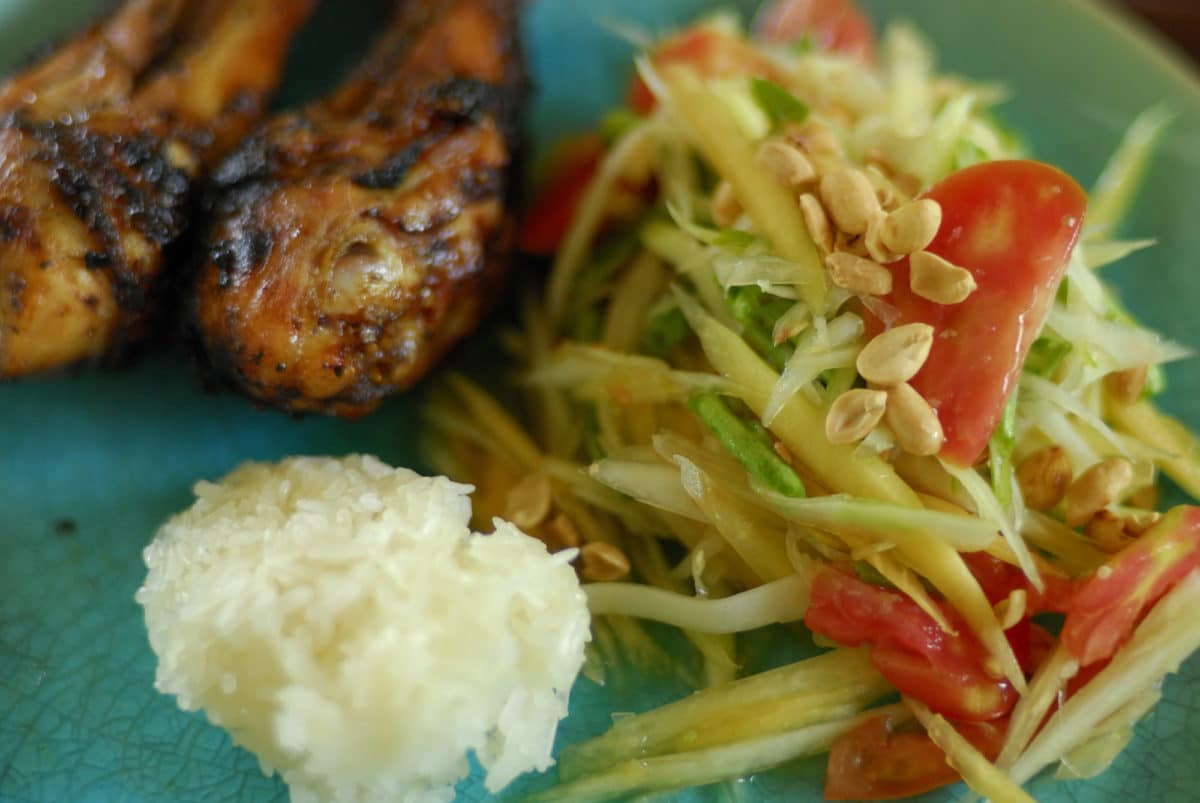

Just as I almost — almost — look back fondly on the night my husband and I spent in Sukhothai, Thailand, in the height of the hot season a dozen years ago. We’re young, we’re cheap, we’re having an adventure. And the adventure goes like this:
We toss and turn in pools of sweat, a budget room with a fan, a bed and a great ruckus outside, all night long. Our luck: we have chosen a guesthouse beside a chicken slaughterhouse. We didn’t know this when we checked in because the slaughterhouse operates only at night so the chickens are ready for the morning markets. The butcher begins lopping the heads off birds, one by one, starting at 10 pm — just as we attempt to sleep.
I see it through our window and through a small slit in the ramshackle wooden building where this death occurs. I see a small light. And in that light, I see a man sitting beside a bin. I see him grasp a feathered beast from the bin, and I hear it wail. It sounds so real and human: “No. No, no, no, no, NO.” A crescendo of pitiful tones, ending abruptly on a high quick plea shouted in anger. “NO.” I cannot actually see the man perform the act of killing (a wooden slat blocks my view), but I know. The cries cease immediately and the headless carcass flies into an adjacent bin. And then it begins again as the man’s hand reaches again toward the other bin for another bird.
This continues without fail every 24 seconds (I count) until sunrise. Soon thereafter, we depart Sukhothai by train, heading south 8 hours to Bangkok. We ride third class, no aircon (we’re young, we’re cheap, we’re having an adventure). Sweat pearls on my face, neck, arms and hands. It drips down my legs and fingers. The sweltering air never ceases, and the passing scenery seems all the same: green fields and workers in straw hats. And then another town with another market and another row of rainbow-colored umbrellas shielding storefronts and stalls selling smoking-hot grilled chicken.

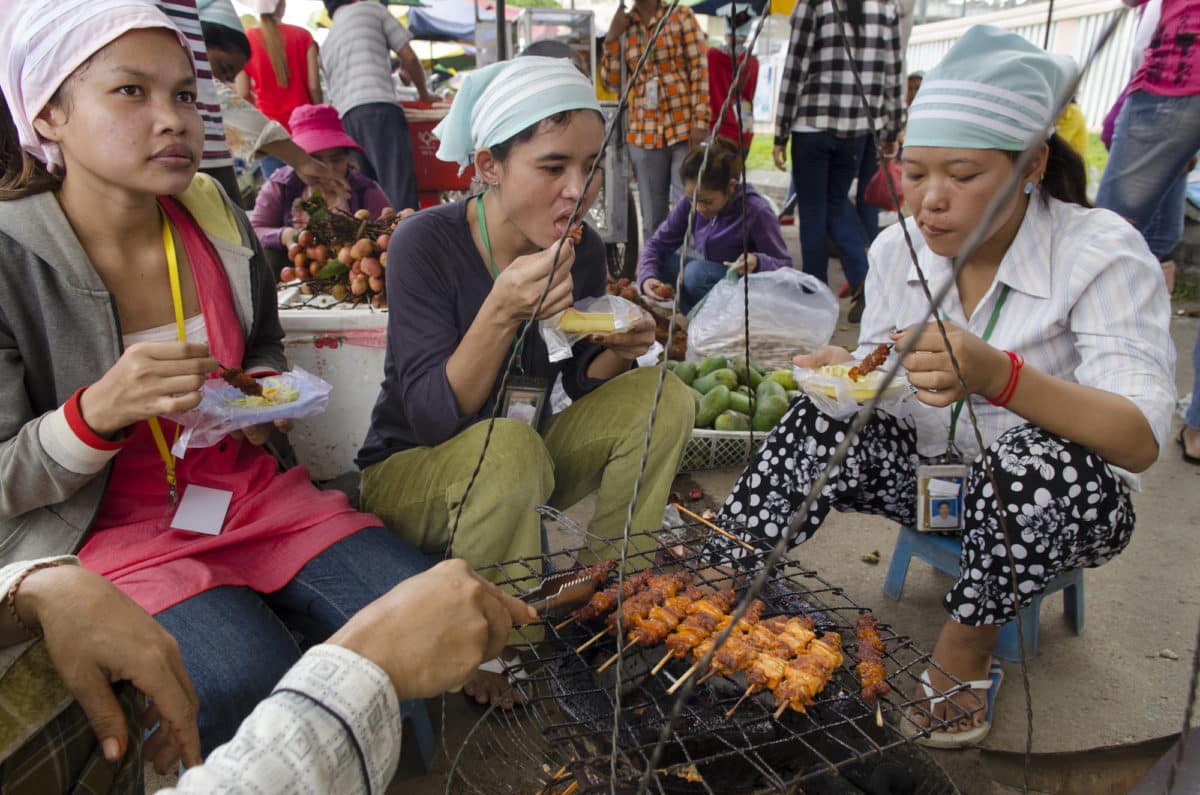
I have never killed a chicken, and I admit the disconnect between what I eat and what I know — the reality that a once-living bird must die for it to become paprikash on my plate. Production and slaughter are neither pretty nor nice, especially not on a massive scale. They offend the sensibilities of those who care about the treatment of animals, and all of us non-vegans make our own moral justifications for consuming flesh.

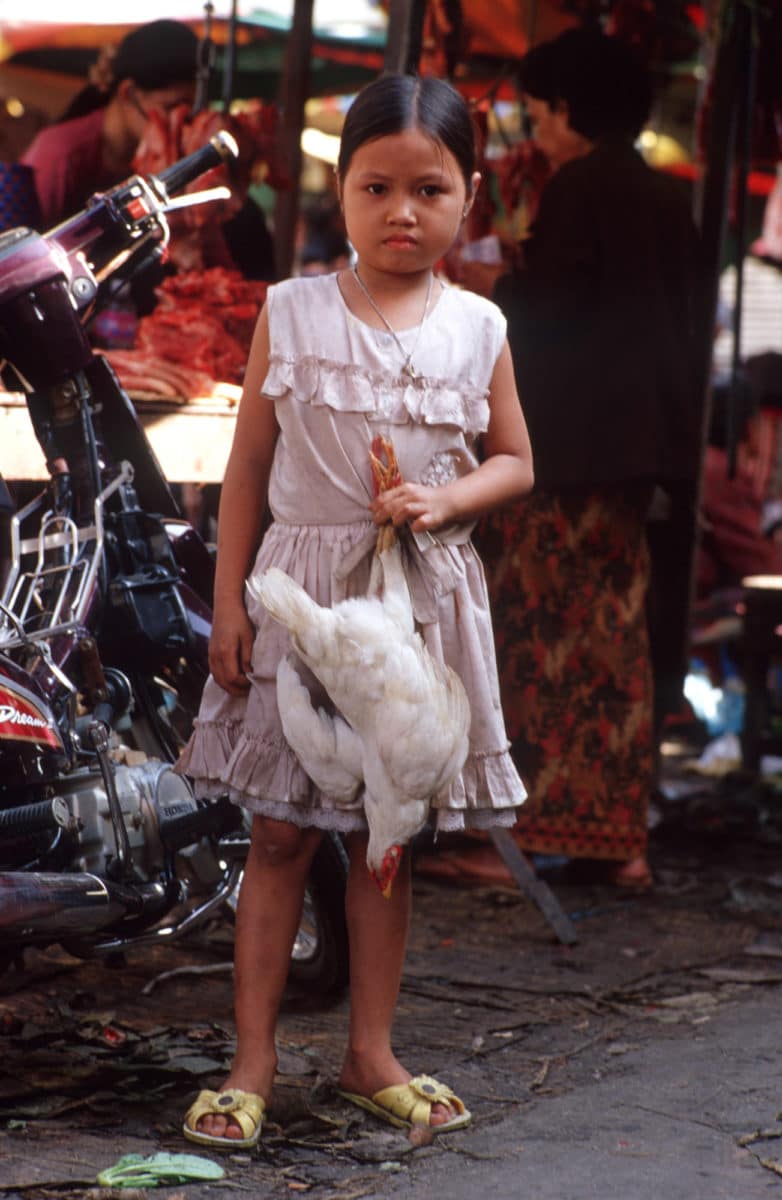

What I witnessed in Sukhothai is hardly the worst in terms of animal welfare. “The muscles and fat tissues of the newly engineered broiler birds grow significantly faster than their bones, leading to deformities and disease. Somewhere between 1 and 4 percent of the birds will die writhing in convulsions from sudden death syndrome, a condition virtually unknown outside of factory farms.” Just read a little Jonathan Safran Foer and learn how bad it gets (and, no, you really don’t want to know about farmed pigs). In the factory farm scenario — the predominant operation supplying our Safeways, Albertsons and Piggly Wigglys — chickens that survive a full 47-day factory life are loaded into crates and onto trucks and shipped to a plant where their ankles are shackled and the birds are hung upside down on a conveyor system, which drags them through an electrified water bath. “This most likely paralyzes them but doesn’t render them insensible,” Foer writes. Then, they’re taken through an automated throat slitter. They’re decapitated, their feet and innards are removed — and that’s when further trouble occurs. In this step of the process, intestines are frequently sliced and fecal matter sprays the cavity, contaminating the meat.
It’s not just gross, it’s dangerous. A 2014 Consumer Reports study found that 97 percent of tested chicken breasts “harbored bacteria that could make you sick,” — everything from Enterococcus to E. coli, Campylobacter to Salmonella and more. Not all contaminants would cause food poisoning, but their presence indicates widespread contamination with fecal matter (which is why food safety experts always recommend cooking chicken to at least 165 degrees).
The study, fittingly titled “The High Cost of Cheap Chicken,” also found multi drug resistant bacteria on one in three samples of chicken tested. And that’s where things get really ominous. We are, many experts predict, heading into a post-antibiotic world in which seemingly simple infections will turn killer on us — because antibiotics will no longer work. Because we’re eating conventional meat, circa 2014. Because we’re feeding huge amounts of antibiotics (30 million pounds each year, in America alone) to livestock, including chicken. Because diseases are growing resistant to antibiotics. Because these are the same antibiotics we use on ourselves. (If you want an entire archive of documentation on this matter, just Google the journalist Maryn McKenna.) This is serious stuff: we’re talking a return to the age when bug bites, skinned knees and sore throats could kill.
This is what goes through my head when I eat chicken. It’s hard to make the voices stop.
Chicken — in its evolution from a belligerent bird of the Asian forests, to a creature of abundant sustenance, to a possible harbinger of doom — is, in many ways, symbolic of humanity. We took an ancient bird and built a modern food machine. That modern food machine is harboring ancient bacteria and building modern killers out of them. We created the modern chicken. We did this to ourselves. And now we must figure it out.
And yet, sometimes, I still order restaurant chicken, no questions asked, here in America when I’m out to lunch on business (as I was today) and it’s the most appealing thing on a limited menu. I eat chicken (organic, free-range) breasts in Boulder, chicken (of unknown provenance) saj in Baku, and chicken (freshly slaughtered, in my presence) soup in mountaintop Hmong villages of northern Laos. I do my best to do the best I can. But we are only human.
I’m back on the river Chao Phraya. I take one last bite of Thai barbecued chicken, slathered in sticky chile. And for a few moments I just eat, thinking no deep thoughts at all. ![]()
